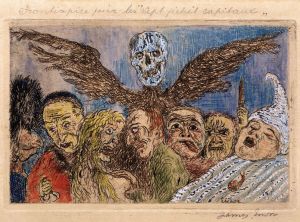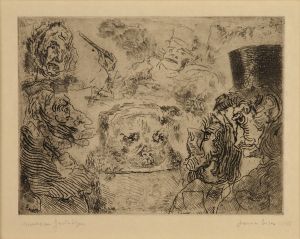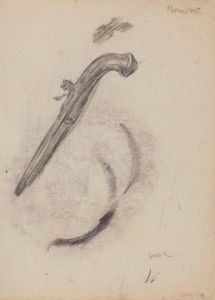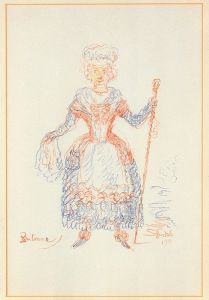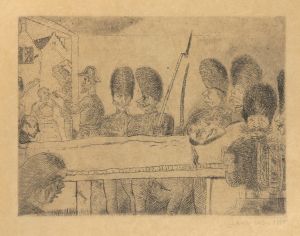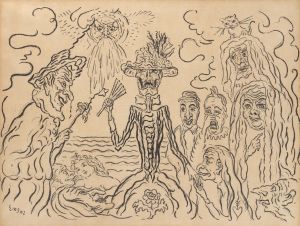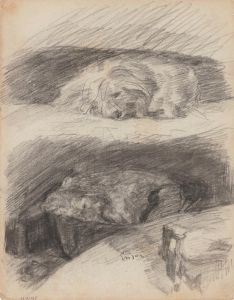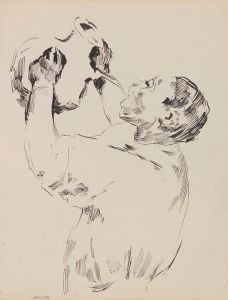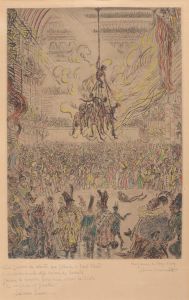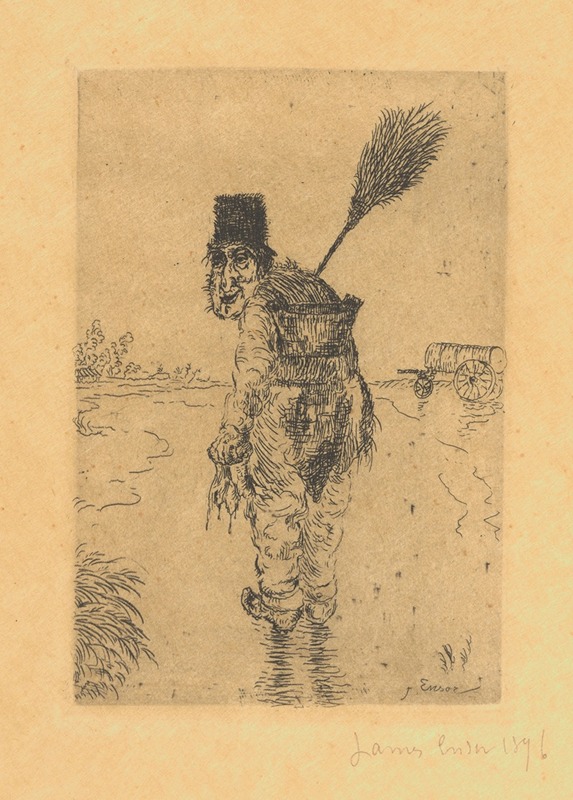
De putruimer
A hand-painted replica of James Ensor’s masterpiece De putruimer, meticulously crafted by professional artists to capture the true essence of the original. Each piece is created with museum-quality canvas and rare mineral pigments, carefully painted by experienced artists with delicate brushstrokes and rich, layered colors to perfectly recreate the texture of the original artwork. Unlike machine-printed reproductions, this hand-painted version brings the painting to life, infused with the artist’s emotions and skill in every stroke. Whether for personal collection or home decoration, it instantly elevates the artistic atmosphere of any space.
James Ensor was a Belgian painter and printmaker, known for his unique and often provocative style that combined elements of symbolism, expressionism, and surrealism. One of his notable works is "De putruimer," which translates to "The Sewer Cleaner" in English. This painting is a reflection of Ensor's fascination with the grotesque and the macabre, themes that frequently appear throughout his body of work.
Ensor was born in 1860 in Ostend, Belgium, and spent most of his life there. His family owned a curiosity shop, which exposed him to a wide array of unusual objects and artifacts that would later influence his artistic style. Ensor's work often features masks, skeletons, and other fantastical elements, which he used to explore themes of mortality, identity, and the absurdity of human existence.
"The Sewer Cleaner" is a prime example of Ensor's ability to blend the mundane with the bizarre. The painting depicts a figure engaged in the act of cleaning a sewer, a task that is both ordinary and repulsive. Ensor elevates this scene by infusing it with his characteristic style, using vivid colors and exaggerated forms to create a sense of drama and tension. The figure in the painting is rendered with a sense of anonymity, obscured by the grime and muck of the sewer, which may suggest themes of dehumanization and the loss of identity.
Ensor's use of color in "The Sewer Cleaner" is particularly noteworthy. He employs a palette that is both vibrant and unsettling, with bold contrasts that draw the viewer's eye and evoke a visceral response. This use of color is a hallmark of Ensor's work, reflecting his interest in the emotional and psychological impact of visual art.
The painting also reflects Ensor's interest in social commentary. By choosing to depict a sewer cleaner, Ensor highlights the often-overlooked labor and the individuals who perform it. This focus on the marginalized and the unseen is a recurring theme in Ensor's work, as he frequently sought to challenge societal norms and provoke thought about the human condition.
Ensor's work, including "The Sewer Cleaner," was not always well-received during his lifetime. His unconventional style and subject matter often drew criticism from the art establishment. However, he remained committed to his artistic vision, and his work eventually gained recognition for its originality and depth. Today, Ensor is celebrated as a pioneer of modern art, and his paintings are held in high regard for their innovative approach and profound thematic content.
"The Sewer Cleaner" exemplifies James Ensor's unique artistic voice, combining elements of the grotesque with a keen social awareness. Through his use of vivid color, dramatic composition, and thought-provoking subject matter, Ensor invites viewers to confront the complexities of human existence and the often-ignored aspects of daily life. His work continues to resonate with audiences, offering a window into the mind of an artist who was unafraid to explore the darker corners of the human psyche.







